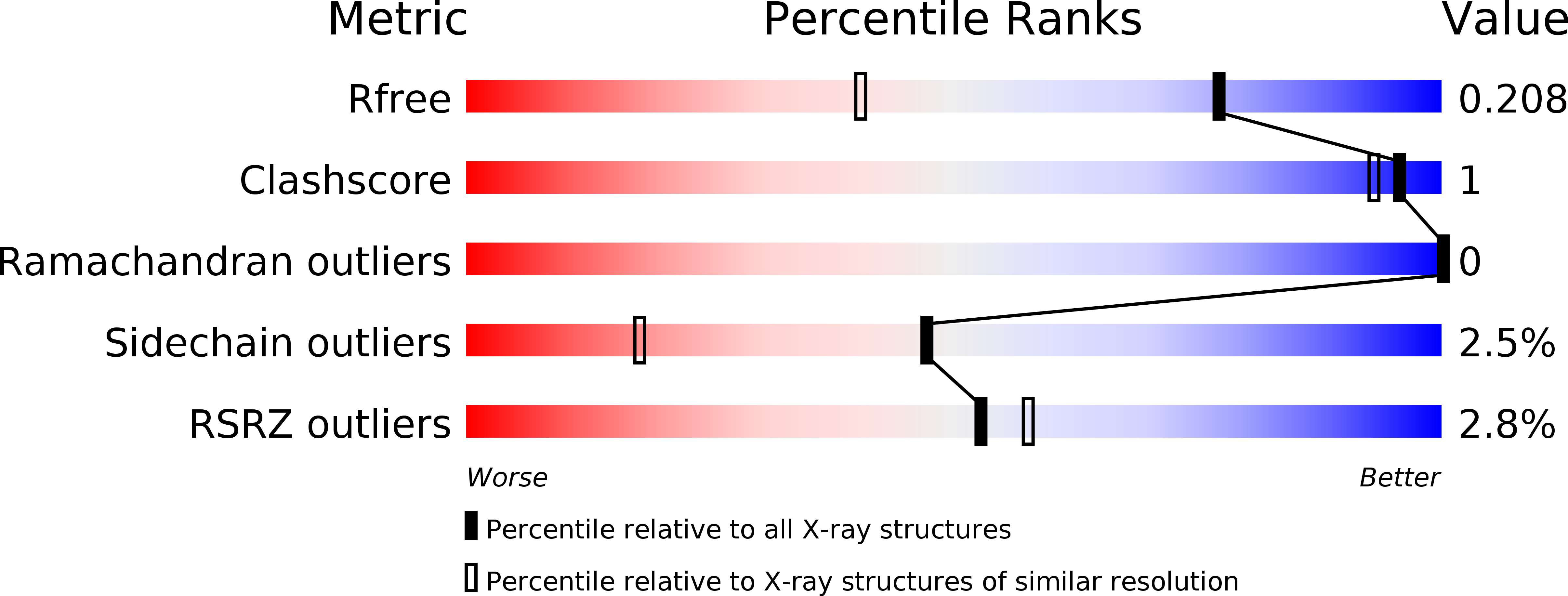The Antineoplastic Lectin of the Common Edible Mushroom (Agaricus bisporus) Has Two Binding Sites, Each Specific for a Different Configuration at a Single Epimeric Hydroxyl
Carrizo, M.E., Capaldi, S., Perduca, M., Irazoqui, F.J., Nores, G.A., Monaco, H.L.(2005) J Biol Chem 280: 10614-10623
- PubMed: 15596442
- DOI: https://doi.org/10.1074/jbc.M411989200
- Primary Citation of Related Structures:
1Y2T, 1Y2U, 1Y2V, 1Y2W, 1Y2X - PubMed Abstract:
The lectin from the common mushroom Agaricus bisporus, the most popular edible species in Western countries, has potent antiproliferative effects on human epithelial cancer cells, without any apparent cytotoxicity. This property confers to it an important therapeutic potential as an antineoplastic agent. The three-dimensional structure of the lectin was determined by x-ray diffraction. The protein is a tetramer with 222 symmetry, and each monomer presents a novel fold with two beta sheets connected by a helix-loop-helix motif. Selectivity was studied by examining the binding of four monosaccharides and seven disaccharides in two different crystal forms. The T-antigen disaccharide, Galbeta1-3GalNAc, mediator of the antiproliferative effects of the protein, binds at a shallow depression on the surface of the molecule. The binding of N-acetylgalactosamine overlaps with that moiety of the T antigen, but surprisingly, N-acetylglucosamine, which differs from N-acetylgalactosamine only in the configuration of epimeric hydroxyl 4, binds at a totally different site on the opposite side of the helix-loop-helix motif. The lectin thus has two distinct binding sites per monomer that recognize the different configuration of a single epimeric hydroxyl. The structure of the protein and its two carbohydrate-binding sites are described in detail in this study.
Organizational Affiliation:
Biocrystallography Laboratory, Department of Science and Technology, University of Verona, Strada Le Grazie 15, 37134 Verona, Italy.














